Air Operations, CBI
CHINA
- 32 14th Air Force P-51s and P-40s attack troops and towns in areas of southern China.
[  | |   ] ]
Air Operations, East Indies - 49 V Bomber Command B-24s and 49 XIII Bomber Command B-24s attack oil refineries at Balikpapan, Borneo.
- FEAF B-24s sow mines at Pombelaa, Celebes.
- B-25s, A-20s, and fighter-bombers attack the Haroekoe and Laha airfields on Ceram.
- 2 V Bomber Command B-24s are lost over Balikpapan.
- 49th, 347th, and 475th Fighter group P-38s and 35th Fighter Group P-47s down 38 Japanese fighters over Borneo's Manggar airfield and Balikpapan between 1030 and 1055 hours.
- 5 V Fighter Command fighters are lost over Balikpapan. but several pilots are rescued by PBYs.
[  | |   ] ]
Air Operations, Europe During the day 1,063 bombers escorted by 300 fighters drop 5,000 tons of bombs on Duisburg. During the night 1,005 bombers drop 4,500 tons of bombs in 2 night attacks. 20 planes are lost in the raids. 2,450 people are killed. Diversionary operations include a destructive attack on Brunswick where 561 people are killed. The 8th Air Force sends 1,000 bombers, escorted by P-47s and P-51s, to attack Cologne.
RAF BOMBER COMMAND
Daylight Ops:
- 519 Lancasters, 474 Halifaxes and 20 Mosquitos are sent to Duisburg with RAF fighters providing an escort. 957 bombers drop 3,574 tons of high explosive and 820 tons of incendiaries on Duisburg. This raid is part of a special operation which has received little mention in the history books. On the previous day, Sir Arthur Harris received the directive for Operation HURRICANE: 'In order to demonstrate to the enemy in Germany generally the overwhelming superiority of the Allied Air Forces in this theatre ... the intention is to apply within the shortest practical period the maximum effort of the Royal Air Force Bomber Command and the VIIIth United States Bomber Command against objectives in the densely populated Ruhr.' Bomber Command had probably been forewarned of the directive because it is able to mount the first part of the operation soon after first light on this day.
- 13 Lancasters and 1 Halifax are lost. It is probable that the Lancasters provided the early waves of the raid and drew the attention of the German flak before the flak positions were overwhelmed by the bombing.
- For their part in Operation HURRICANE, the American 8th Air Force sends 1,251 heavy bombers escorted by 749 fighters. More than 1,000 of the American heavies bomb targets in the Cologne area. American losses are 5 heavy bombers and 1 fighter. No Luftwaffe aircraft are seen.
Minor Ops:
- 2 aircraft are on Resistance operations and there are 2 RCM sorties.
Evening Ops:
Minor Ops:
- 20 Mosquitos are sent to Hamburg, 16 to Berlin, 8 to Mannheim and 2 to Düsseldorf, 141 training aircraft make a diversionary sweep to Heligoland, 100 aircraft of No. 100 Group make RCM, Serrate and Intruder flights, and 8 aircraft are on Resistance operations.
- 1 Halifax is lost on the diversionary sweep and 1 Mosquito is lost on the Berlin raid.
US 8th AIR FORCE
GERMANY:
- On the day's first mission, 90 1st Bomb Division B-17s attack the marshalling yard at Saarbrucken.
- 117 2nd Bomb Division B-24s attack the city of Kaiserlautern.
- No bomber are lost, but 1 of 253 VIII Fighter Comand escorts is downed.
- 326 1st Bomb Division B-17s, 248 2nd Bomb Division B-24s, and 314 3rd Bomb Division B-17s attack industrial targets and marshalling yards in Cologne.
- 5 heavy bombers are lost, but all of the 732 VIII Fighter Command escorts return safely
US 9th AIR FORCE
ETO:
- 9th Air Force fighters and fighter-bombers support US Army ground forces along the various battle fronts.
US 12th AIR FORCE
ITALY:
- 12th Air Force fighter-bombers attack tactical targets and lines of communication in support of the US 5th Army.
US 15th AIR FORCE
CZECHOSLOVAKIA:
- 15th Air Force heavy bombers attack marshalling yards at Bratislava and Nove Zamky.
GERMANY:
- 15th Air Force B-24s attack oil-industry targets at Odertal.
- 15th Air Force B-17s attack oil-industry targets at Blechhammer.
GREECE:
- In the first of several Operation MANNA missions to be undertaken over several days, 55 15th Air Force P-38s escort C-47s carrying British airborne troops to an airdrome at Megara, Greece.
HUNGARY:
- 15th Air Force B-17s attack marshalling yards at two locations, an industrial area, and a military base.
- Escort fighters strafe two airdromes near Lake Balaton.
YUGOSLAVIA:
- 15th Air Force B-24s attack the bridge at Maribor.
[  | |   ] ]
Air Operations, Formosa - Japanese aircraft based on Formosa (including hundreds of Japanese Navy reinforcements drawn from the carrier fleet) mount 419 offensive sorties through the day in an all-out effort to cripple Task Force 38. 1 heavy cruiser is damaged. In response, and to help cover the slow withdrawal of crippled US warships, Task Force 38 aircraft undertake a day of airfield strikes not envisaged in the original plan.
- Task Force 38 fighters down 10 fighters, 1 D4Y 'Judy' dive bomber, and 1 P1Y 'Galaxy' bomber over Okinawa between 0710 and 0930 hours; 1 P1Y 'Galaxy' bomber, 3 D4Ys 'Judy' dive bombers, and 2 fighters at sea between 1030 and 1250 hours; 13 P1Y 'Galaxy' bombers within 15 miles of the carriers at 1500 hours; 20 D4Y 'Judys' and 1 B6N 'Jill' torpedo bomber over the carriers at 1515 hours; 1 Ki-46 'Dinah' reconnaissance plane, three D4Y 'Judys', and 2 A6M Zeros just outside the task force screen between 1530 and 1545 hours; 3 D4Y 'Judys', 1 B5N 'Kate' torpedo bomber, and 12 fighters 50 miles off Formosa between 1600 and 1610 hours; 2 twin-engine aircraft 25 miles from the carriers at 1615 hours; 4 D4Y 'Judys' within 40 miles of the carriers at 1630 hours; 1 A6M Zero at sea at 1650 hours; 1 P1Y 'Galaxy', 1 B5N 'Kate', 2 B6N 'Jills', 1 D3A 'Val' dive bomber, 1 Ki-45 'Nick' fighter, and 1 Ki-43 'Oscar' at sea at 1700 hours; and 1 P1Y 'Galaxy' 21 miles from the carriers at 1800 hours.
- 91 of 130 58th Very Heavy Bomb Wing B-29s dispatched from Chengtu, China attack an aircraft factory at Okayama with 650 tons of bombs and 12 B-29s attack several targets of last resort. This is the largest B-29 mission to date.
[  | |   ] ]
Air Operations, Japan 4 28th Composite Group B-25s attack Otomoe Bay in the Kurile Islands.
[  | |   ] ]
Eastern Front The Russian armies and Tito's partisans converge on Belgrade, captial of Yugoslavia, which is almost completely surrounded. Further south the Germans are forced to evacuate Nish to avoid being cut off from the main body of Maximilian von Weichs' forces. Riga, the Latvian capital on the Baltic, is captured by Soviet troops, trapping a large German force in western Latvia.
SOUTHERN SECTOR
Army Group F struggles to hold off the attacks of Tito's I Corps, the IV Guards Motorized Corps and 57th Army as they all converge on Belgrade. Despite ferocious fighting the Soviet and Yugoslav troops isolate the city, the XII Yugoslav Corps cutting all of the roads south of the Sava River. The bulk of the German units in the area are cut off, barely 12,000 managing to escape to the north. Heavy fighting erupts inside the city as the Soviet and Yugoslav forces press into the urban area.
[  | |   ] ]
Germany, Command Suspected of complicity in the 20th July plot against Hitler, Rommel is visited at home in Herrlingen by two of Hitler's staff, Gens Wilhelm Burgdord and Ernst Maisel, and given the choice of a humiliating public trial or a suicide by poison with a state funeral and a guarantee of immunity from persecution for his wife and family. In fact, Rommel had agreed to the plot of July 20 in principle but had never taken any practical part in it. Rommel decides to commit suicide and takes the phial of cyanide which the 2 generals themselves give him. A few hours later, the Reich's most glorious and best-loved soldier is dead. It is announced in Germany that he has died of wounds. At Hitler's wish Rommel is given a state funeral to avoid ugly rumors which would have a demoralizing effect on the people.
[  | |   ] ]
Greece Athens and the Piraeus are completely liberated. There are further British landings on Corfu. The main body of the British III Corps is about to land at Piraeus waiting for the mines to be swept from the waters outside the harbor.
[  | |   ] ]
Italy The South African 6th Arm Div, II Corps, US 5th Army, enters Grizzana. In the Livergnano sector the 91st Div advances taking Querceto and forcing the Germans out ot the residential part of Livergnano.
The 78th Div, British XIII Corps, 8th Army, continues to attack toward Monte La Pieve. The Polish II Corps is moved from the British X Corps sector and the forces operating on the left flank of the army, with orders to advance toward Forli.
The V Corps occupies the hills to the east of the Savio River. During the night elements of the Polish 2nd Div enter Sant'Angelo.
[  | |   ] ]
Pacific - The III Amphibious Force sails from Manus Island for the invasion of Leyte, in the Philippines.
- Task Force 38 carries out more attacks, completing the neutralization of Formosa. The light cruiser Houston (CL-81) is damaged by a Japanese aerial torpedo; other ships damaged are the aircraft carrier Hancock (CV-19) by a horizontal bomber, the light cruiser Reno (CL-96) by a suicide plane, the destroyer Cowell (DD-547) in a collision and the destroyer Cassin Young (DD-793) by strafing.
- The US submarine Angler (SS-240) sinks the Japanese army transport Nanrei Maru (2407t) south of Tablas Strait.
- The US submarine Bonefish (SS-223) sinks the Japanese merchant cargo ship Fushimi Maru (2542t) in the South China Sea off the west coast of Luzon.
- The US submarine Dace (SS-247) sinks the Japanese merchant tankers Eikyo Maru (6948t) and Nittetsu Maru (5993t) and damages the merchant ore carrier Taizen Maru off North Borneo.
- The British submarine Sturdy sinks the Japanese communication vessel No.128 in the Gulf of Boni.
[  | |   ] ]
Palau Islands The 81st Inf Div replaces the Marines at the front on Peleliu where the fighting is still fierce. On Angaur the task of capture and occupation is declared completed, even though the US troops have not yet managed to eliminate the Japanese still resisting in the northwest of the island. An estimated 10,700 Japanese have been killed in the month-long fighting. US Marine losses are 1,124 killed and 117 missing.
The American authorities announce that the occupation of Angaur is complete although skirmishing continues on the north of the island.
[  | |   ] ]
Philippines On Luzon the carrier forces of TG 38.4 send attacks on Aparri Airfield.
[  | |   ] ]
Western Front The advance of Canadian II Corps links up with the landing force at Breskens. House-to-house fighting continues in the ruins of Aachen.
In the southeastern sector of the front, where Gen Jacob Devers' 6th Army Group, Alexander Patch's US 7th Army and the French 1st Army under Jean de Lattre de Tassigny, is operating, the 3rd Algerian Div reaches Cornimont.
[  | |   ] ]
Images from October 14, 1944
Operation HURRICANE: Duisburg
|
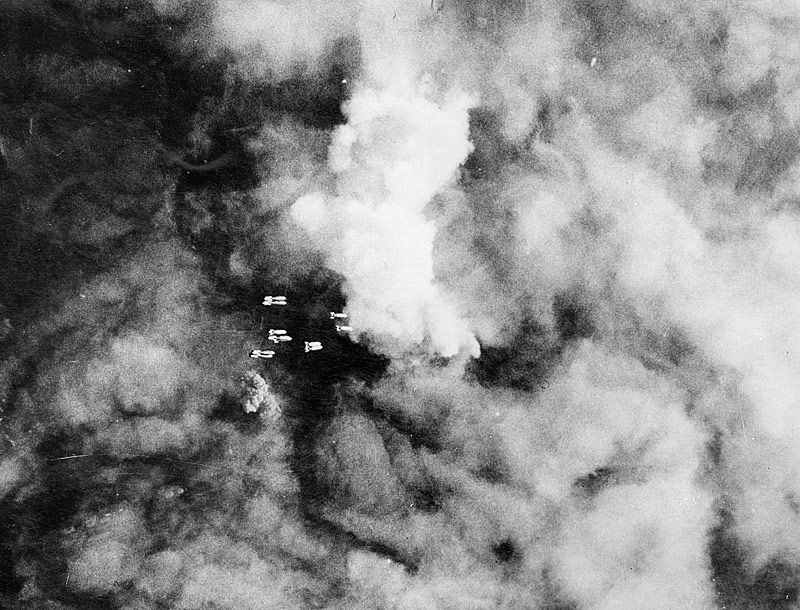 |
|
Brunswick Burns
|
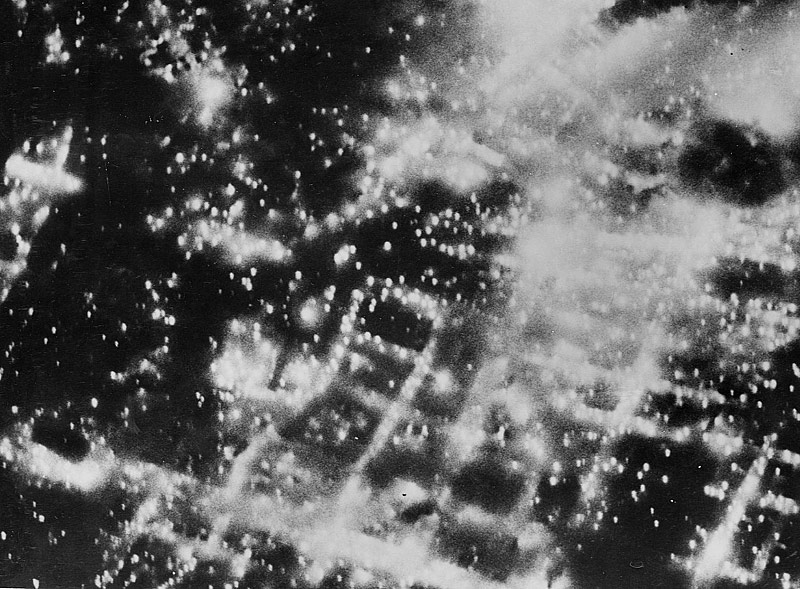 |
|
The British Army In Greece
|
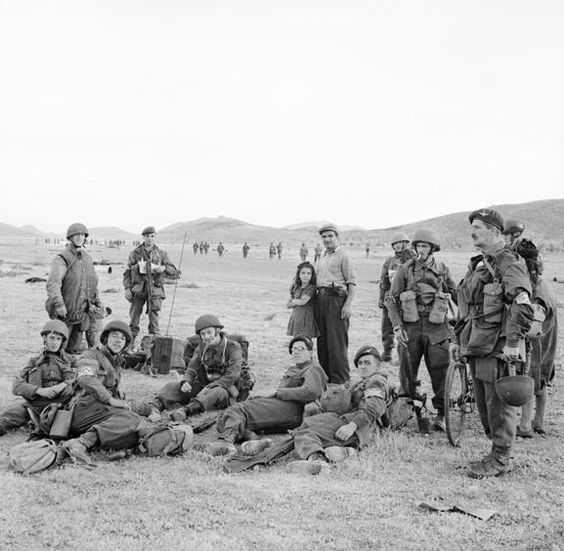 |
|
Supply Depot at Dieppe
|
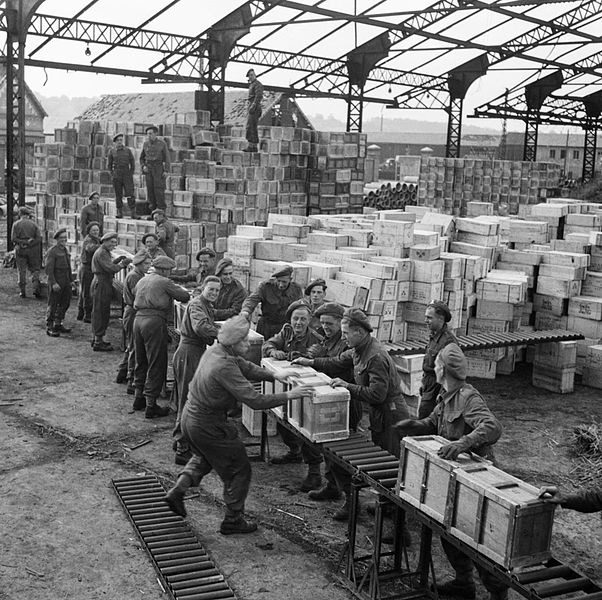 |
|
Chetniks in Liberated Krusevac
|
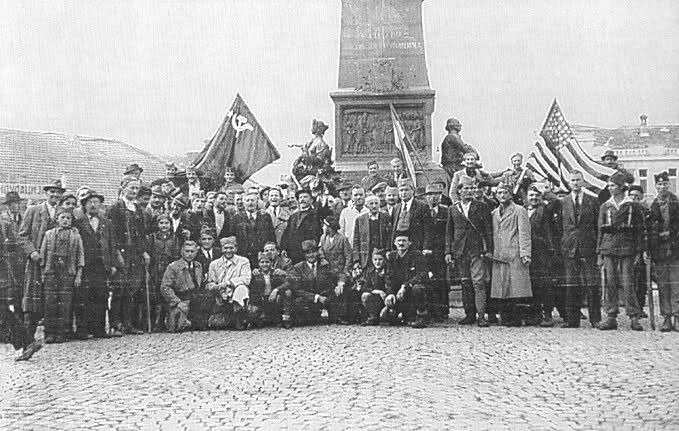 |
|
Damage to the Houston
|
 |
|
Tanks Moving Through Overloon
|
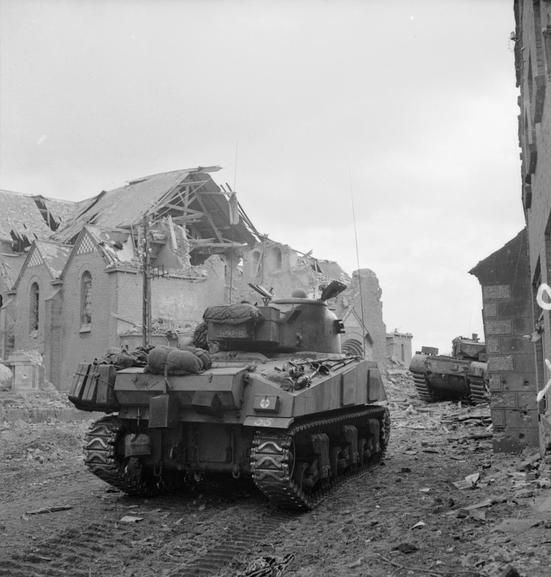 |
|
A Sherman Command Tank
|
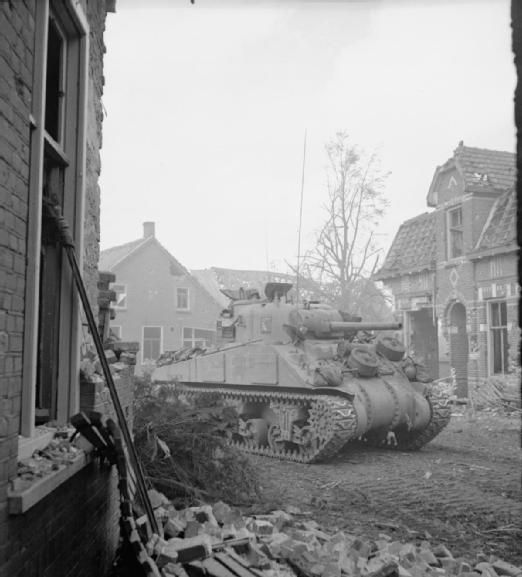 |
|
Tank Supporting Infantry
|
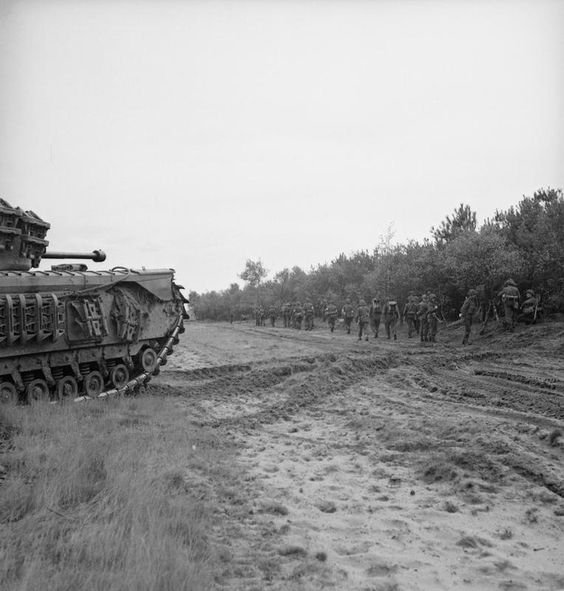 |
|
Churchill Tank in the Overloon Attack
|
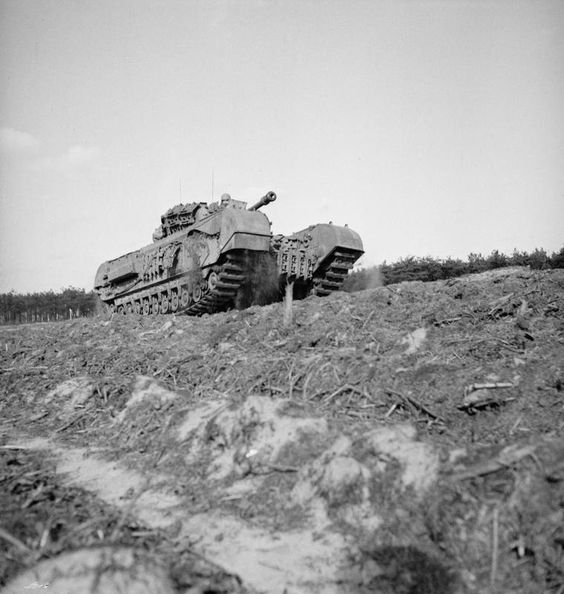 |
|
Infantry in the Overloon Attack
|
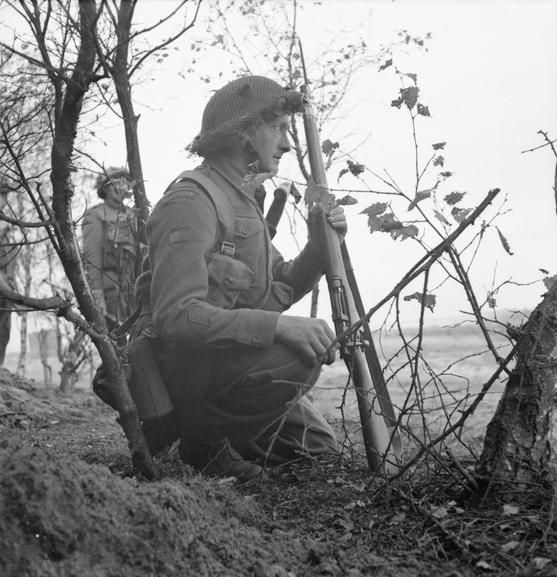 |
|
Bombing Duisburg
|
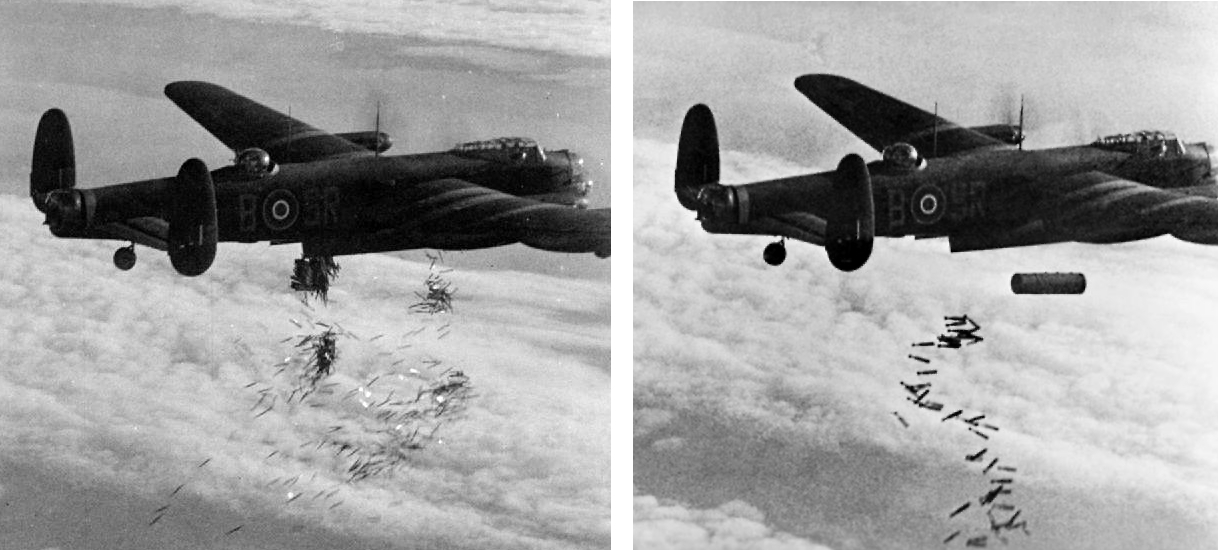 |
|
British Paratroopers Heading for Axis Occupied Greece
|
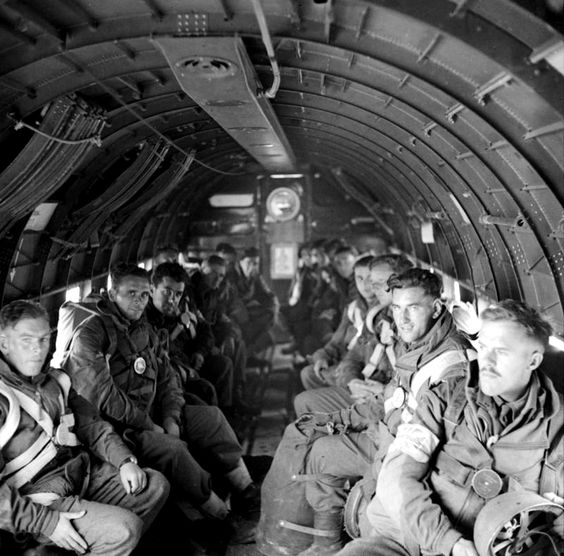 |
|
Balikpapan, Borneo Under Attack
|
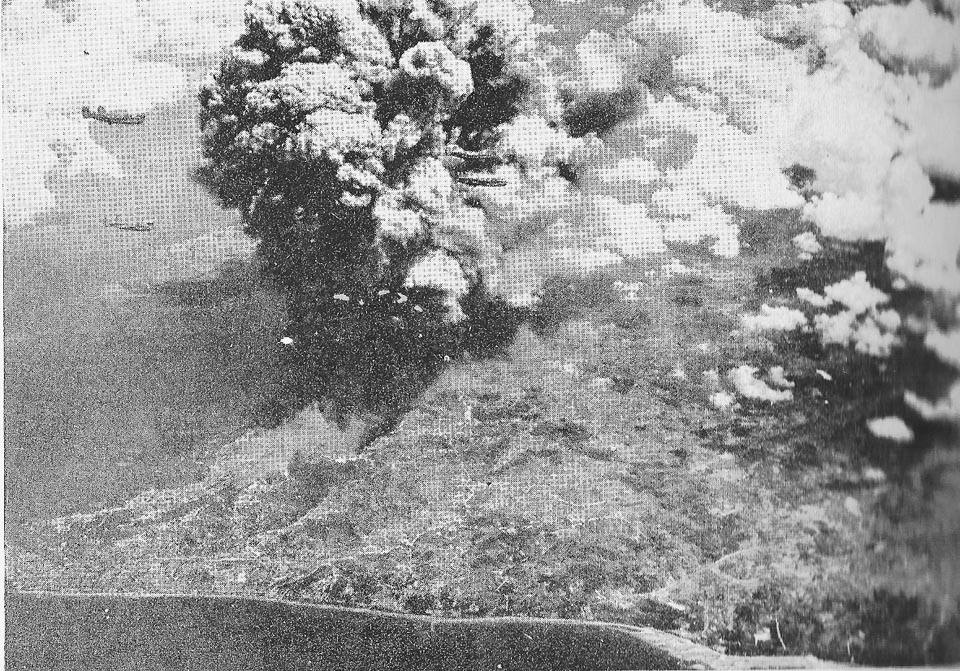 |
|
|












